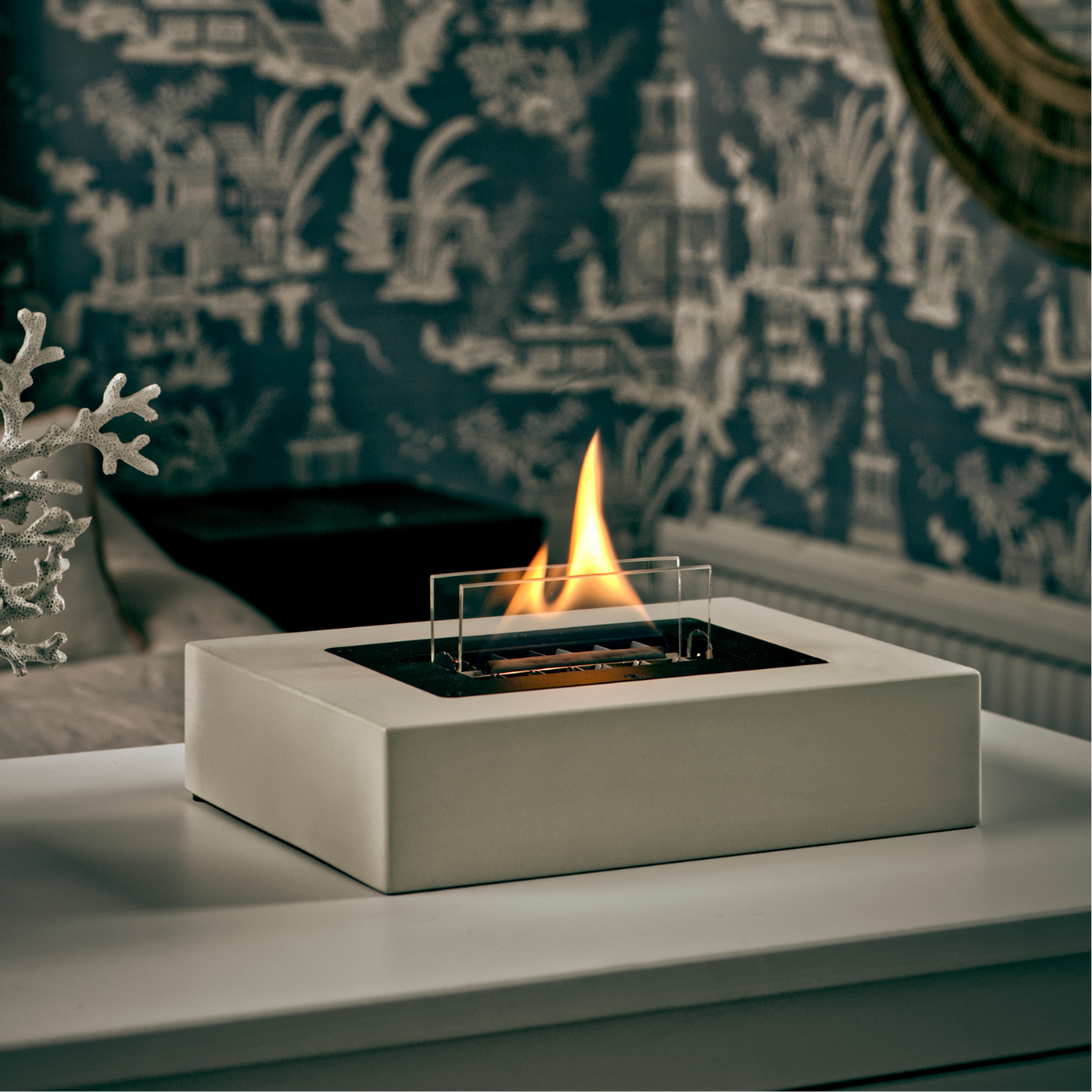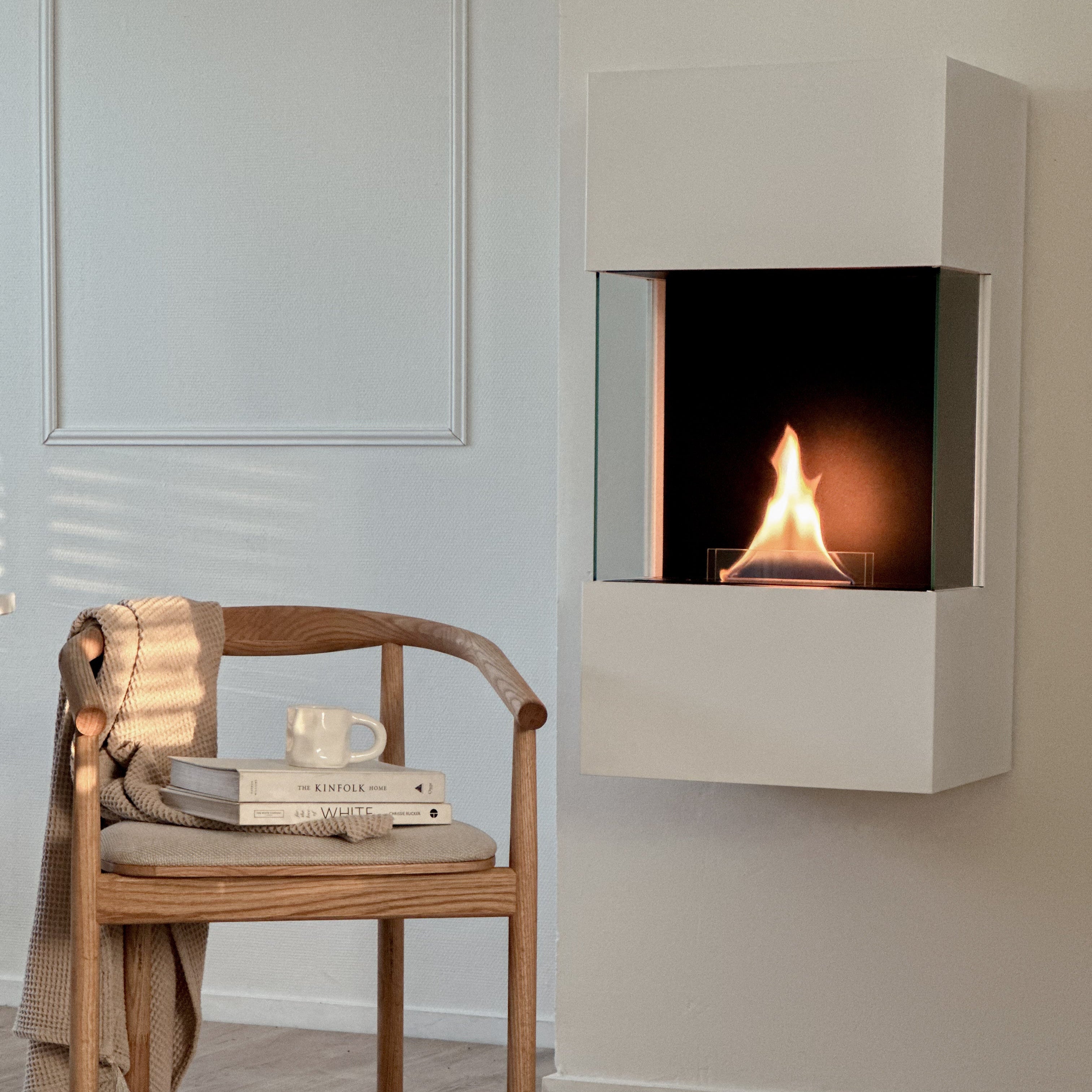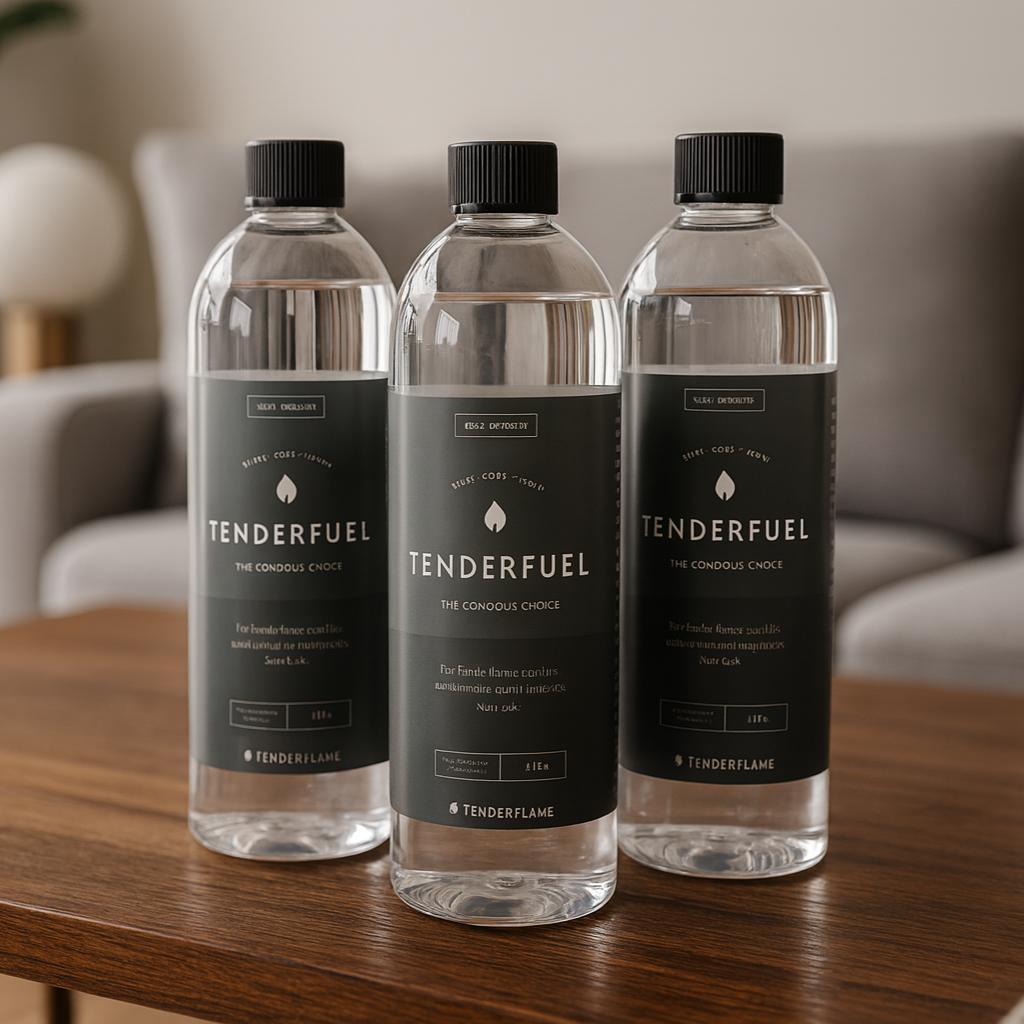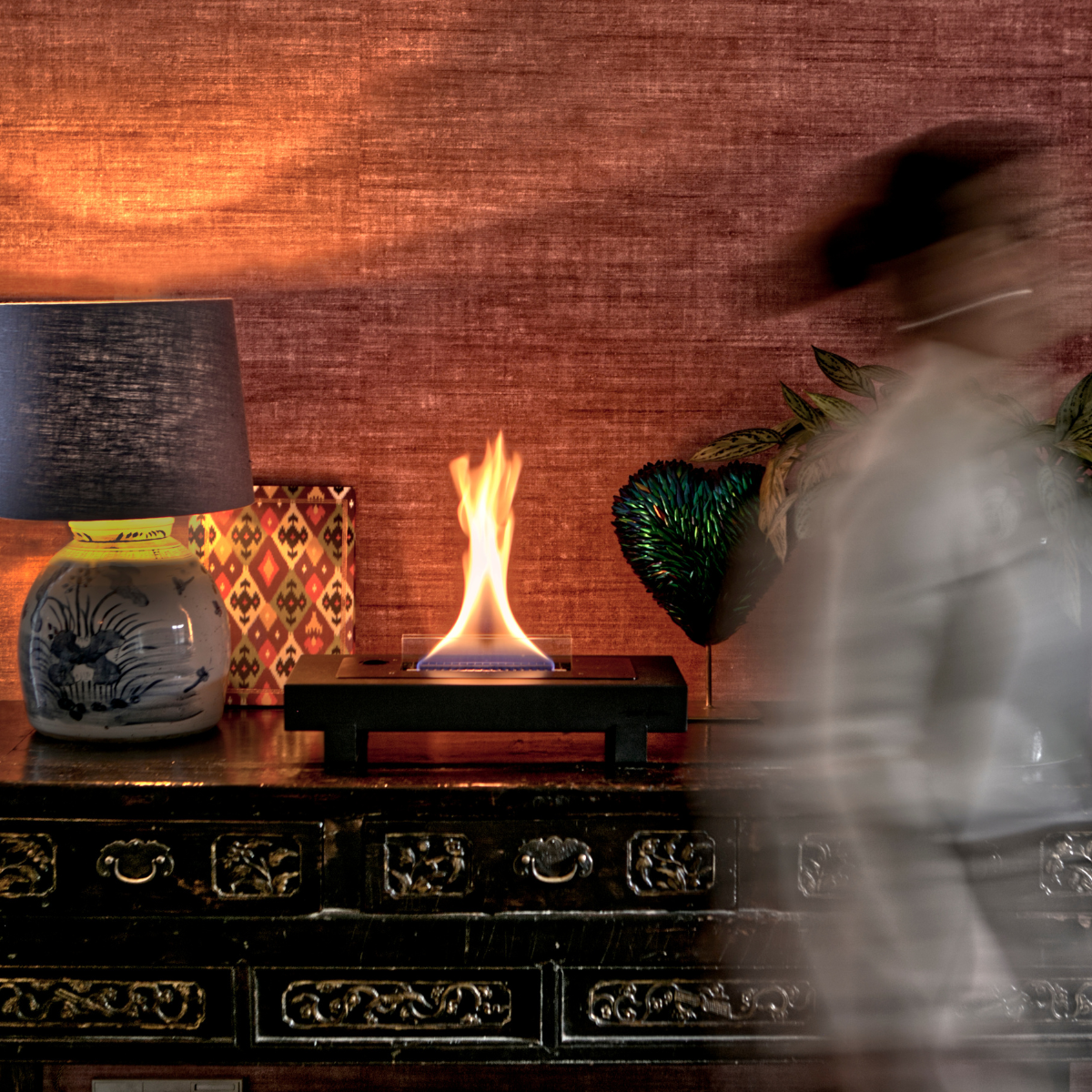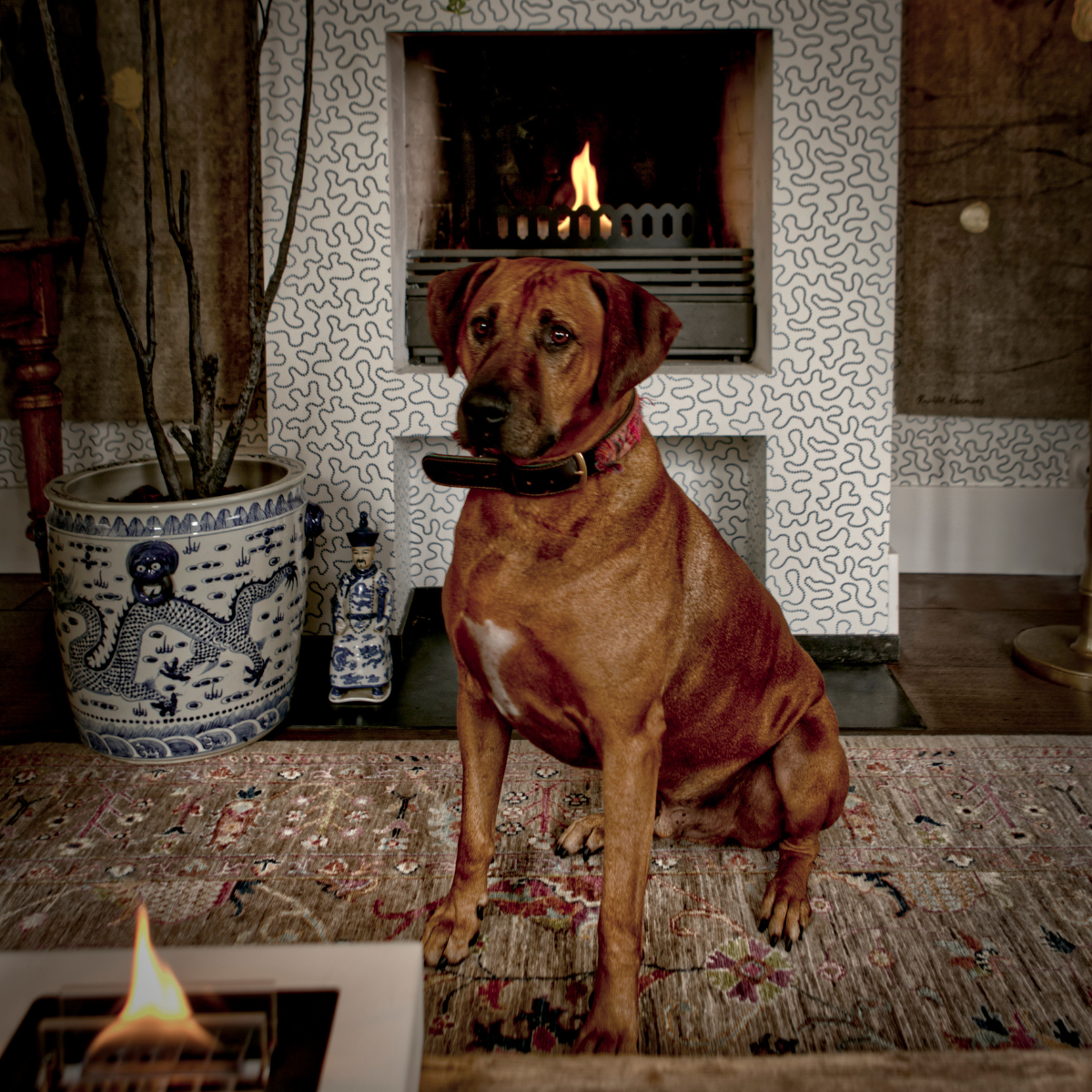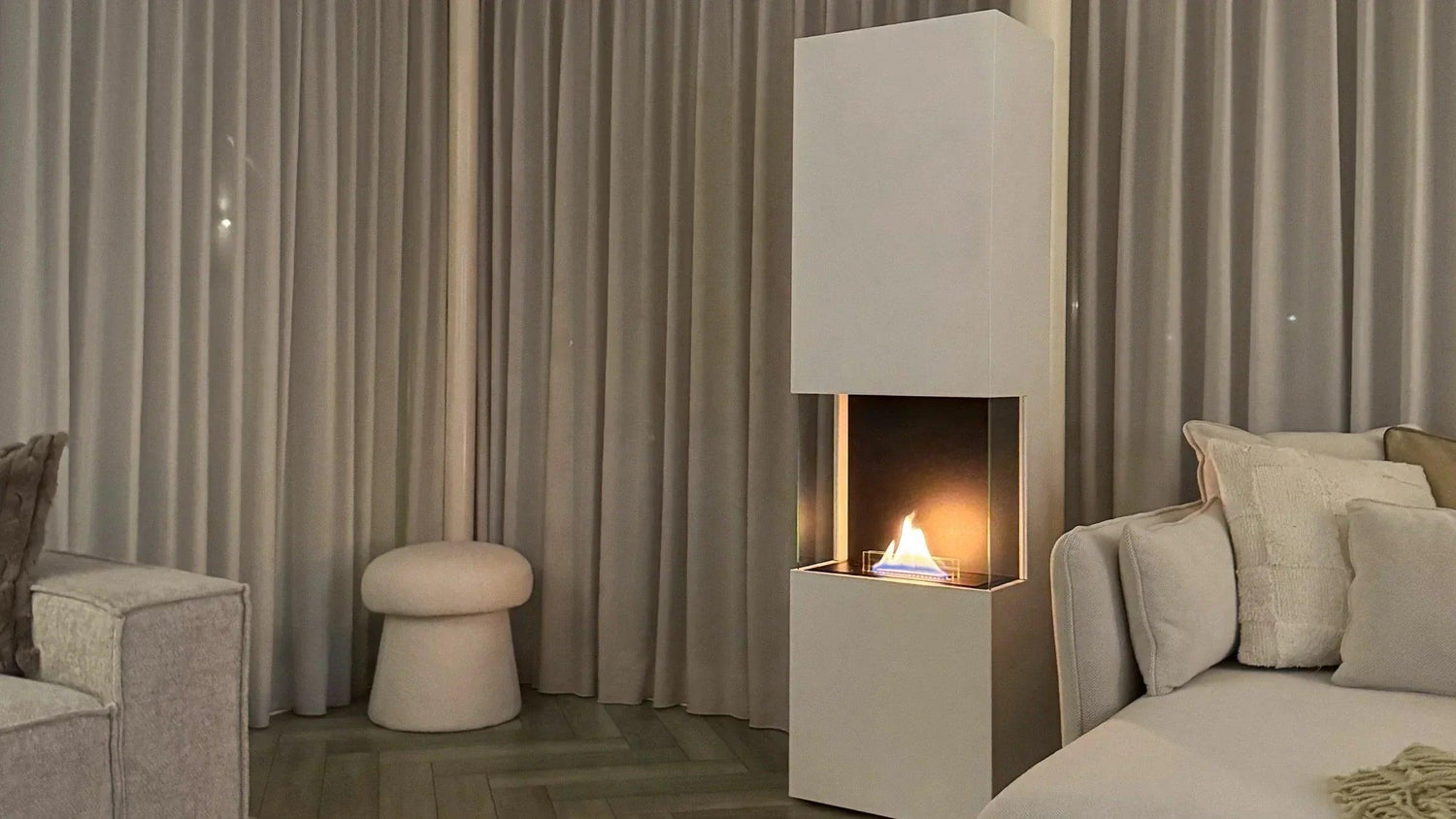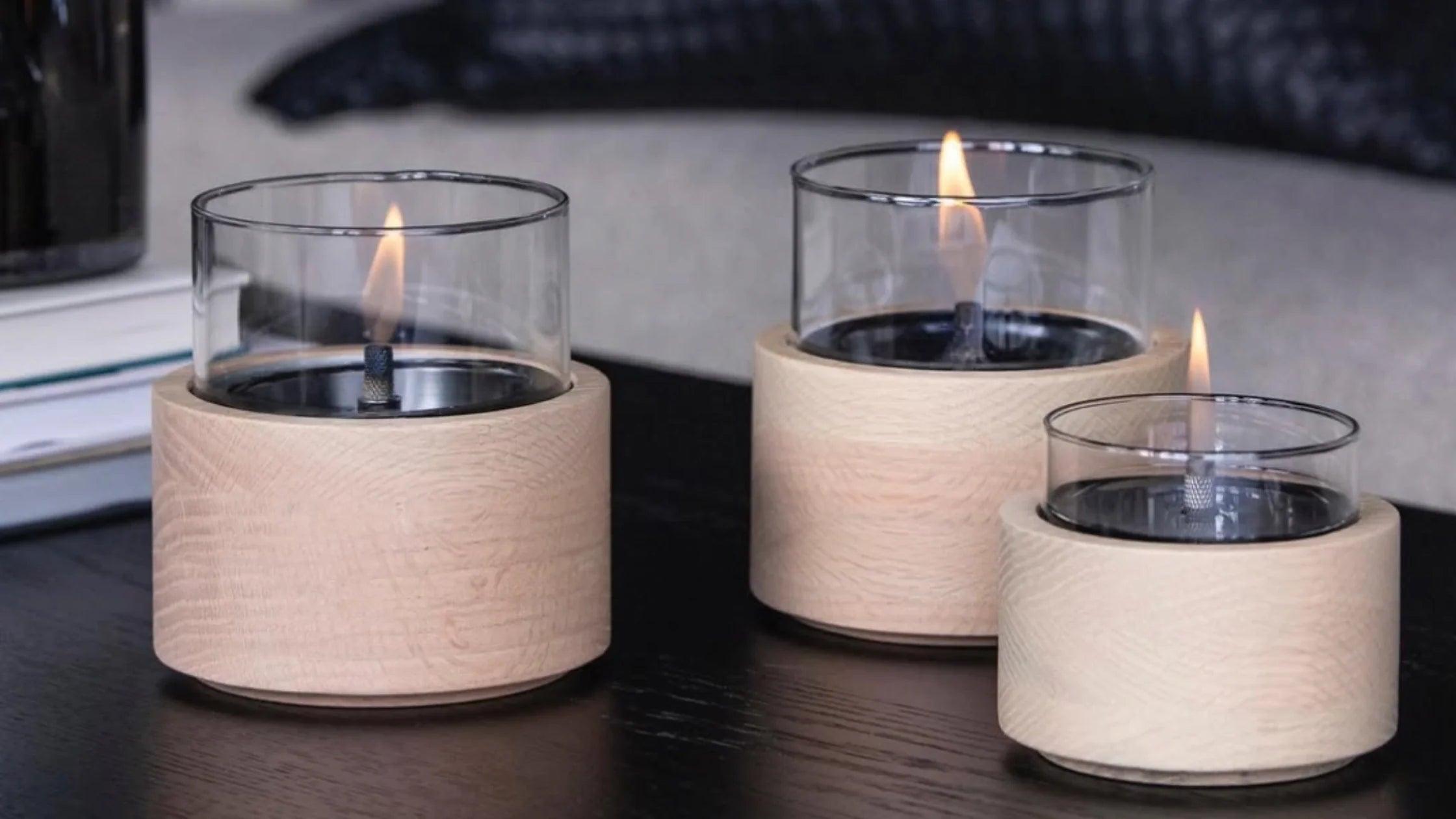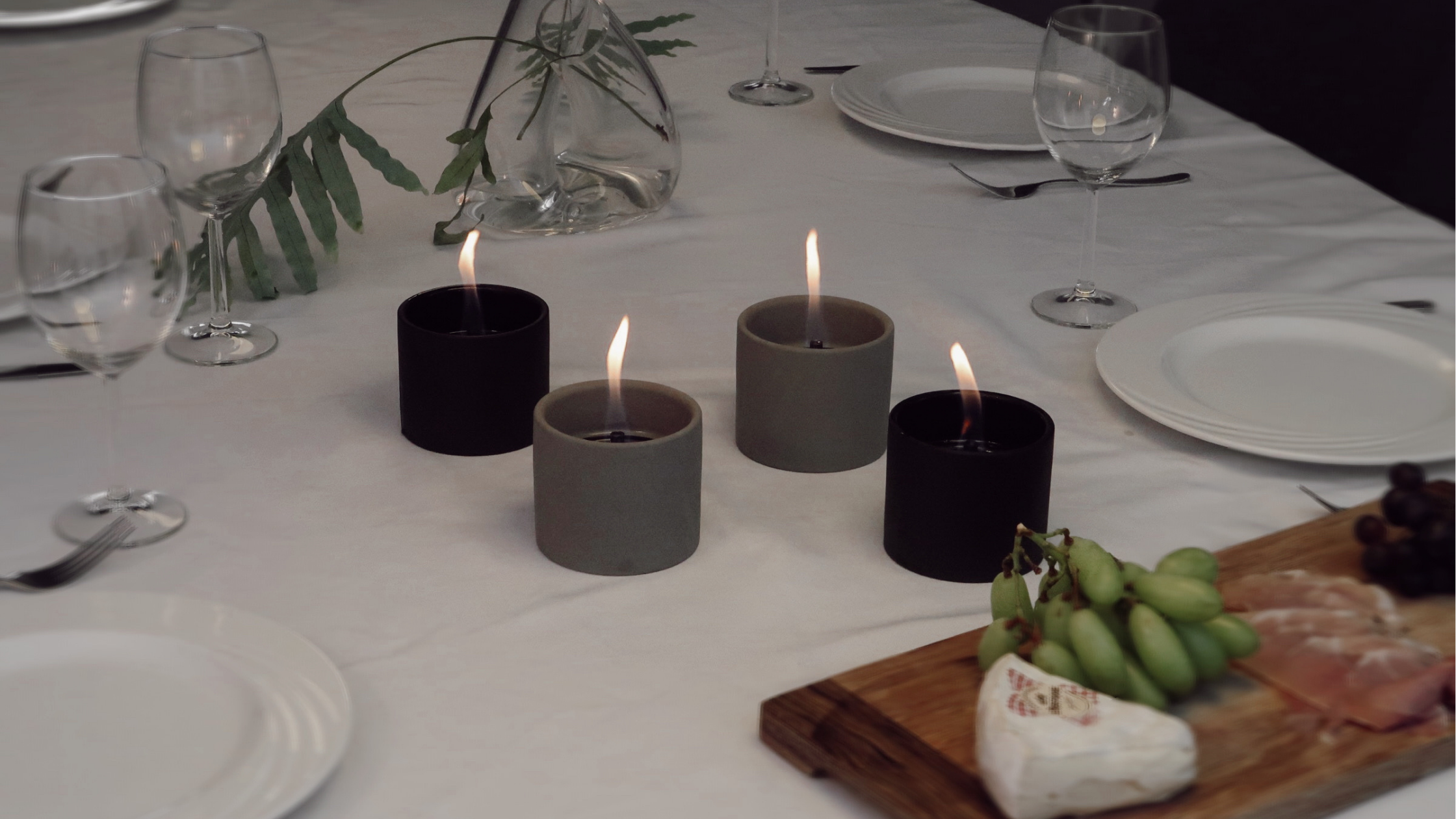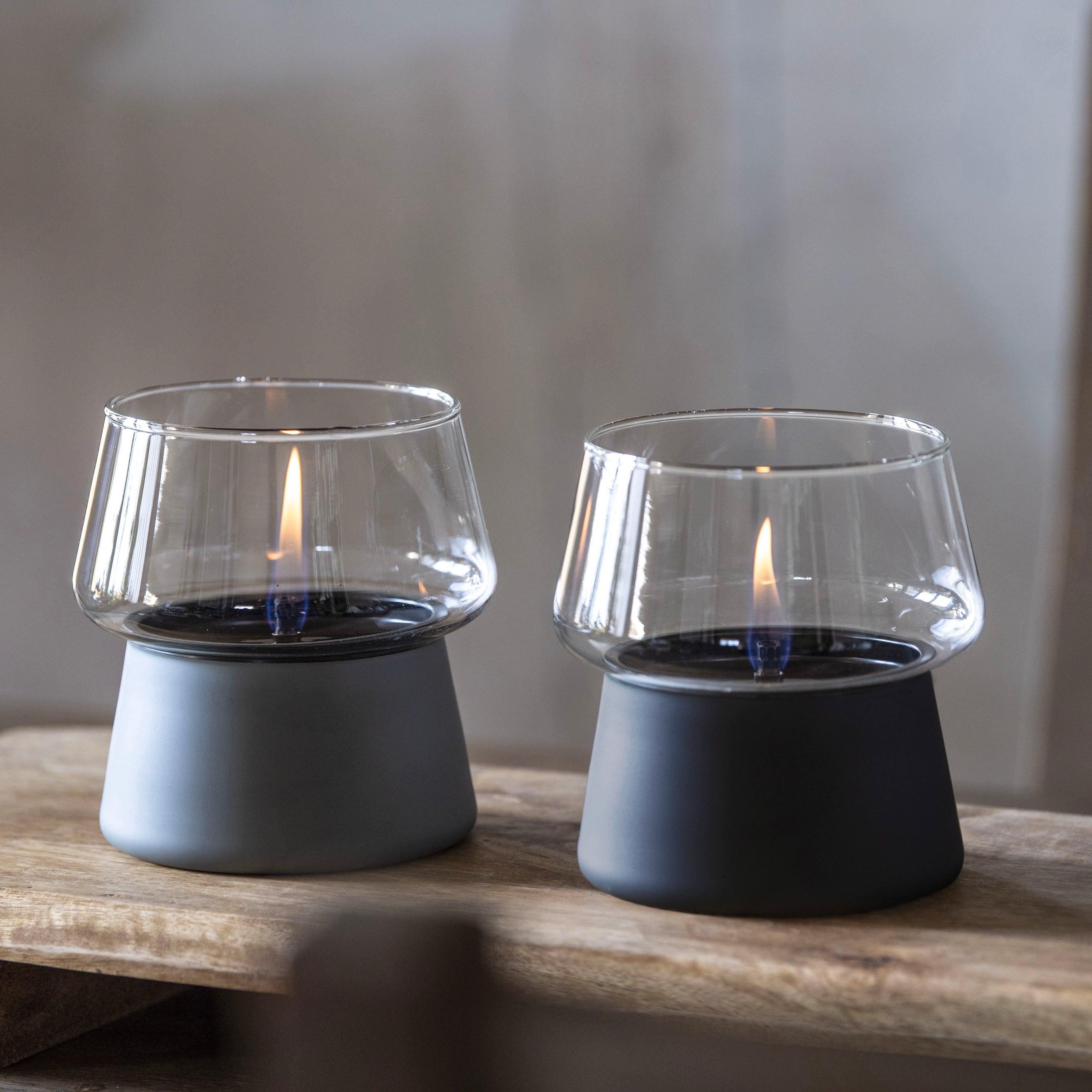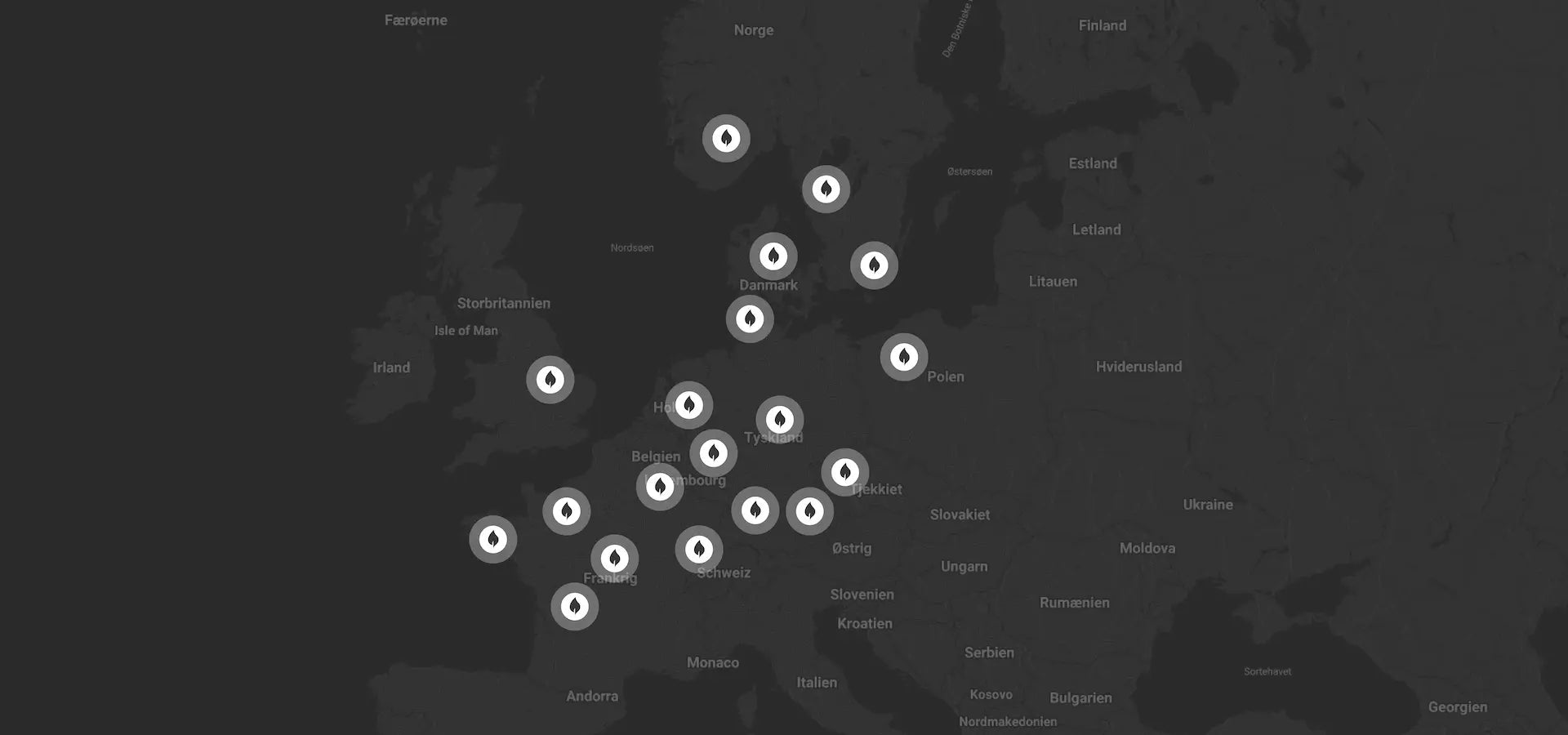Burning wood produces smoke, something we are all familiar with, but what is smoke and what does it consist of? Is wood smoke really as harmful to our health and the environment as is often claimed?
How is fire created?
When wood is lit, the process begins with the evaporation of the moisture in the wood. This already happens at temperatures between 50 and 100 degrees Celsius. As soon as the temperature reaches around 150 degrees Celsius, flammable gas forms in the wood. Only at around 400 degrees Celsius does a real fire occur, when the gases in the wood ignite and mix with the oxygen in the air.
When burning wood, there are several combustible substances that contribute to the fire. One of these is hydrogen, which reacts with oxygen to form water. This is the only combustion that does produce heat, but is invisible with a colourless flame. The smoke that is released is often perceived as wood smoke, but in this case it is colourless and odourless. In colder conditions, this water vapour can become visible as a white mist that quickly dissolves in the atmosphere.
However, burning wood, for example in a traditional wood stove, can generate a significant amount of smoke and harmful substances. This is a concern for many people, especially when it comes to the impact of particulate matter and other harmful compounds that enter the air.
Chemical compounds in wood smoke
Wood smoke is a complex substance, with a variety of chemical compounds released during the combustion of wood. It is difficult to define wood smoke as a pure substance, because it interacts with combustion air, chimneys and atmospheric conditions. Wood smoke consists of 70% to 80% nitrogen, and also contains a mixture of oxygen, carbon dioxide, water vapour, unburned gases, wood dust, soot, tar droplets, ash and about 1% of other chemicals.
These compounds can be harmful to health and the environment. For example, the smoke can cause odor pollution, while the fine dust particles in the air can be harmful to the lungs and blood. Ultra-fine dust (PM 0.1) is particularly worrying, because these particles penetrate deep into the lungs and can even be absorbed into the blood.
Fine dust and its impact on health
Fine dust is a collective name for particles that enter the air during combustion and spread there. Flying dust, soot and other small particles that do not remain in the ash pan are classified as fine dust. The smallest particles, such as PM 2.5 and PM 0.1, can be harmful to health, as they can enter the lungs and even settle in the blood. Although fine dust is partly of natural origin, such as salt and sand, human activity such as car traffic and the burning of wood contributes to the increase of these particles in the air.
Interestingly, in our daily lives we often do not realize how much particulate matter is released into the air by activities such as barbecuing, using electrical appliances or burning candles. These activities contribute equally to the amount of particulate matter in our environment.
The solution: clean combustion with Tenderflame
While wood smoke and the harmful substances that come with it are a common problem, there are cleaner alternatives available. A prime example of this is Tenderflame , an innovative combustion system that uses specially developed fluid and the associated burners to provide a clean, safe and responsible way of making fire.
Tenderflame offers the opportunity to enjoy the atmospheric effect of fire, without the harmful effects of traditional wood combustion.
Tenderflame uses an innovative steel wick system , where the fuel, Tenderfuel , only burns effectively and safely in combination with the steel wick. This system ensures complete combustion, resulting in less smoke, particulate matter and harmful substances in the air compared to traditional wood combustion. The use of this closed system ensures that the combustion is more efficient, making it less harmful to air quality and the health of those around it. This makes Tenderflame not only an atmospheric alternative, but also a cleaner and more sustainable choice for creating fire .
Conclusion
Although burning wood is often unavoidable for warmth or ambiance, it is important to consider the impact on our health and the environment. By switching to alternatives such as a Tenderflame fireplace, you can experience the joy of fire without the harmful effects of traditional combustion. Tenderflame offers a clean and responsible way to make fire, so that we can enjoy the warmth and light as well as healthy and clean air.


